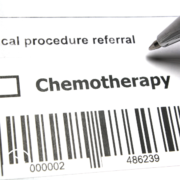Dr. Ana Maria Lopez: Why Is It Important for You to Empower Patients?
Dr. Ana Maria Lopez: Why Is It Important for You to Empower Patients? from Patient Empowerment Network on Vimeo.
Can myeloproliferative neoplasm (MPN) care providers take a different approach to hierarchical patient-provider healthcare? Expert Dr. Ana Maria Lopez from Sidney Kimmel Cancer Center provides insight to the approach she takes to help empower patients in their care experience.
See More from Empowering Providers to Empower Patients (EPEP)
Related Resources:

|

|

|
Transcript:
Dr. Ana Maria Lopez:
I think, I really see myself as a facilitator of the healing process, the patient is the expert in their disease, in their illness process, they are living it every single day. And by having the patient, kind of like what we said earlier, you know the patient has questions, or the patient comes in with a list of questions, that’s great, because the patient is activated…is empowered enough to say, “Hey, these are my concerns.” So I think having a person get to that space or helping them get to that space is really, really important, and then what I can do to help with that is one, is simply to encourage that, that the patient is the expert in their own disease, and how they want to, I want to understand what is the experience like for you? What are your goals, what are your needs, what is most difficult or least difficult, and what is it that we need to address? So that I’m really partnering and really understanding from the patient’s experience, so I think that we’ve had such changes and there used to be the physician and the patient, and very hierarchical.
I tell you what to do. There’s so much information now, and there’s really more of a respect, and I think that’s really important, that respect that we are partners. And ultimately, this is about you, this is about the patient. So “How can I help you?” is I think my approach.









